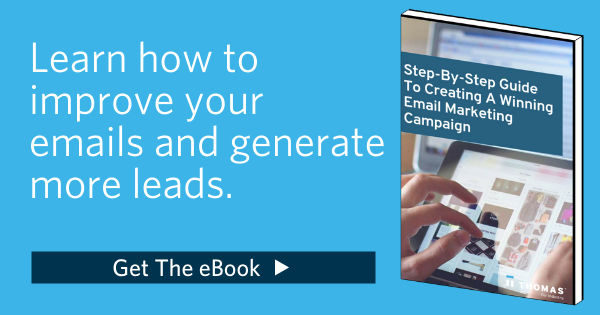Best Practices for Steering Clear of Spam Filters
Team Thomas August 14, 2018
Email filters represent one of the biggest challenges faced by email marketing campaigns today. Every email sent undergoes a multitude of filtering processes, each one making it increasingly likely that your email will not reach its intended target. To make your email campaign more successful, it’s important to understand how spam filters work and how you can work with them to ensure your message gets to where it needs to be.
What is A Spam Filter?
A spam filter is a technology used by email providers to remove unwanted, unsolicited, and malicious emails from a user’s inbox. With email being one of the easiest and most common channels for cybersecurity risks (e.g., phishing attempts, malware, viruses), email hosts have been developing stronger security measures to protect their users from unwittingly opening corrupt emails.
Spam filters use pre-determined criteria to classify the email and then send it to the corresponding folder, such as the inbox or spam.
Ways To Avoid Email Spam Filters
There are several ways to improve your chances of successfully navigating the spam filter and increase lead generation:
Campaign Metadata
Spam filters will often filter out an email if it seems like the recipient is not familiar with the sender. To rectify that situation, use merge tags to customize the “To” field of your email. You can also send your emails through a verified domain. If you’re close with your recipients, you can even ask them to add you to their contacts (whitelist) to make sure their email recognizes you.
IP Address
Make sure that everyone in your company is following the correct email rules. Even if only one person sends spam, all other emails sent from the same IP address or domain could also be considered spam.
Coding
Make sure the coding in your campaign is correct. Spam filters often use messy code, extra tags, and code accidentally copied from Microsoft Word as reasons for classifying an email as spam.
Content & Format
Keep the content of your emails consistent with your brand to make sure that it won’t send any red flags to the spam filter. Also, make sure that the format of your email keeps the content clear, well-balanced in design, and accessible to users.
Understand Email Regulations
To help further protect users against unwanted emails, the U.S. Federal Trade Commission has established the CAN-SPAM Act to give recipients the right to opt out of messages and to implement strong penalties for any violations.
In order to comply with the CAN-SPAM Act and avoid any hefty fines, businesses should adhere to the following Compliance Guide tips from the FTC:
- Don’t use false or misleading header information
- Don’t use deceptive subject lines
- Identify the message as an advertisement
- Tell recipients your location
- Provide instructions for how to opt-out of future emails
- Honor opt-out requests promptly
- Monitor what others are doing on your behalf
If your customers are located outside the United States, those countries may have their own rules and regulations in place, so it’s important to be aware of international regulations in all areas where you engage in marketing outreach. For example, Canada has its own regulations known as Canada’s Anti-Spam Legislation.
Email Best Practices: Dos & Don’ts
To make sure your email doesn’t end up in your audience’s spam folders, here are some easy dos and don’ts to follow in your next email marketing campaign:
Do's:
- Choose your opt-in method wisely
- Use spell check
- Set expectations when people join your list
- Treat your email campaigns as an extension of your brand
- Keep email lists current and clean
- Use double opt-in
- Use a familiar sender name
Don’ts:
- Don’t use purchased, rented, or scraped lists
- Don’t use routinely bounced email addresses
- Don’t use all caps in your email
- Don’t use excessive punctuation, like exclamation points
- Don’t embed forms in your emails
- Don’t use trigger words that could flag spam filters
- Don’t assume you have permission to send emails—even to established customers
- Don’t wait too long before contacting your subscribers
Read the full details of email marketing dos and don'ts here.
Get More Email Marketing Tips To Engage Buyers
Email can be a very effective marketing tool, but only if the message is actually reaching your intended customers. But if you're still unsure how you can effectively engage B2B buyers, contact our marketing experts for a free digital health check. We've been connecting B2B buyers to the right suppliers for more than 122 years — yes, even before email marketing!
"Thomasnet.com has been a worthwhile venture for our company by substantially increasing our brand recognition and allowing those that need the products and services we offer to connect with us in a real way," said Blisterpak Inc. "We are now well known in the region as well as a national marketplace and have been able to secure business that we would never have been considered for in the past."
To help make sure your message is getting to your audience and not ending up in their spam folders, visit the below resources:
Did you find this useful?










